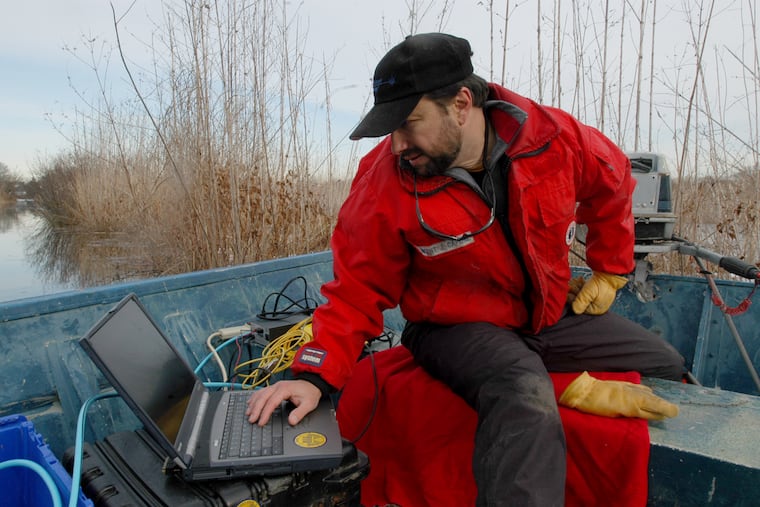From 2005: A Civil War mystery remains murky
If Rancocas is hiding the prototype of the Navy’s first submarine, it's not giving it up.

This story was originally published on Dec. 15, 2005.
Vince Capone wouldn’t say whether he had found anything. He just smiled yesterday after towing a $20,000, torpedo-shaped magnetometer over a mound of earth on the Rancocas Creek in Riverside.
Local researchers and amateur historians believed the site contained the Civil War prototype of the Navy’s first submarine — and hoped Capone, a marine remote-sensing expert, could confirm their suspicions.
They had read historical records and period newspapers about the Philadelphia-built sub’s being stored along the creek. And they had interviewed several residents who recalled — from childhood — playing on a strange rusty cylinder with tapered ends and a hatch.
The moment of truth came late yesterday afternoon when Capone returned from a frigid motorboat tour of the Rancocas and analyzed the data on a laptop computer at the Delran home of Alice Smith, a Riverside Historical Society archivist, longtime sub researcher, and leader of a band of history sleuths.
The results were not what they expected.
“There is a magnetic anomaly there, but the signature is much smaller than we would expect for a submarine,” said Capone, 46, president and founder of Black Laser Learning, a Delaware company that trains people in remote-sensing skills. “The probability is low that it’s the prototype.”
”Are you sure your equipment is working?” Smith asked with a laugh. “I guess there’s no sub in our stocking this Christmas. Bah, humbug. Do I give up?”
Smith, 58, said she did not see any reason to return to the mound but remained interested in finding the sub. She showed Capone an enlarged aerial photo revealing an intriguing shadow in the creek. Could that be the sub?
Her fellow researchers also promised to check other locations.
”I’d just like to find that thing,” said Bob Donahue, 57, a Delanco resident who joined Capone in the trip to the mound. “I’d go back and dig it up myself.”
Capone set out with about $30,000 of sophisticated equipment — but had to use duct tape and a $10 boogie board to float the magnetometer over the 35-foot-long, cigar-shaped mound.
”I’m nervous,” Smith said as they left the Hawk Island Marina for the tight quarters of a creek tributary, flanked by cattails and duckweed. “It’s like being in a delivery room.”
The full-scale Alligator, which sank in 1863 off Hatteras, N.C., was itself the subject of a search by the Navy and the National Oceanic and Atmospheric Administration during the summer. It and its 33-foot prototype were designed by Brutus De Villeroi and built in Philadelphia.
The submersible had been intended for use in salvage operations, but as the Civil War began in 1861, its potential military applications became obvious.
The iron-hulled prototype was bound for testing at the Philadelphia Navy Base when harbor police in the Delaware seized it on May 17, 1861.
Six months later, the larger Alligator was built at what is now Penn Treaty Park. It was the Navy’s first submarine, the first demonstrated for a president (Abraham Lincoln), and the first intended for war.
The prototype, called Alligator Junior by the searchers, had been stored at the Philadelphia Navy Base and Marcus Hook, according to government records and newspapers. But it was last traced to Delanco and Riverside. Smith said her research led her to believe that De Villeroi had returned to France with the inner workings, abandoning the shell in the Rancocas.
”My hat is off to Alice for doing the research and going through all the politics of this,” Capone said. “This is a fantastic piece of history, but we haven’t found it yet.”
This story was originally published on Dec. 15, 2005.